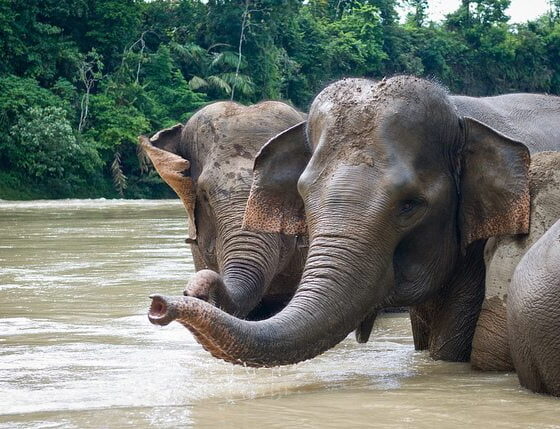

Environment
Extinction occurs 1,000 times faster with human influence, says new study
A new review on extinction has suggested that mankind is causing species to disappear at 1,000 times the natural rate. However, new technology such as smartphones and satellites, as well as crowdsourcing techniques, could provide a way to save them.
In a paper published in the journal Science, researchers from Duke University, North Carolina, analysed various sources to calculate today’s extinction rate.
In 1995, lead author Stuart Pimm’s team estimated that the death rate was 100 to 1,000 times higher than it would be human’s were not around. Now, with better data available, they admit that they had underestimated the problem.
Mankind’s rapid development has led to massive habitat loss, putting many species under a strain, exacerbated by the impacts of climate change.
The stakes couldn’t be higher. Some scientists argue that if the rate continues to rise, ecosystems will collapse and trigger only the sixth mass extinction in the history of the planet. But there is some good news.
Despite recent developments, scientists are still in the dark about the plights of millions of species. “Most species remain unknown to science, and they likely face greater threats than the ones we do know”, said Pimm, a professor of conservation ecology.
However, new approaches are allowing conservationists to mobilize an army of volunteers to aid their research, the study said.
“Online databases, smartphone apps, crowd-sourcing and new hardware devices are making it easier to collect data on species”, Pimm said.
“When combined with data on land-use change and the species observations of millions of amateur citizen scientists, technology is increasingly allowing scientists and policymakers to more closely monitor the planet’s biodiversity and threats to it.”
One example of the crowdsourcing potential of technology is iNaturalist, a mapping project that allows users to share pictures of wildlife they have come across, providing open data for scientific research. So far, citizen scientists have contributed with over 600,000 observations of flora and fauna from around the world.
The team also noted that their study would not have been possible without the work of people who compiled databases such as the IUCN Red List of Threatened Species. But alone, such works are not enough. The Red List, for example, currently covers 70,000 species, while many thousands more are at risk.
“One of the most exciting opportunities made possible by new technology is that we can now combine existing databases such as the Red List with constantly updated maps of where species live, maps of areas that are protected, maps of land-use change and human impacts, and the species observations of amateurs,” Pimm added.
“Rather than relying primarily on local snapshots of biodiversity, we can fashion a more detailed global perspective of Earth’s biodiversity, the threats to it and how to manage them.”
Photo: vincentraal via Flickr
Further reading:
Ecotourism heralded as saviour of threatened Madagascan lemurs
Loss of large carnivores puts ecosystems in danger
Study reveals decline of 16 birds species in the UK
Mixed stories in latest update of threatened species
Bob Geldof warns climate change might cause mass extinction by 2030


 Environment10 months ago
Environment10 months agoAre Polymer Banknotes: an Eco-Friendly Trend or a Groundswell?

 Environment11 months ago
Environment11 months agoEco-Friendly Home Improvements: Top 7 Upgrades for 2025

 Features9 months ago
Features9 months agoEco-Friendly Cryptocurrencies: Sustainable Investment Choices

 Features10 months ago
Features10 months agoEco-Friendly Crypto Traders Must Find the Right Exchange





























